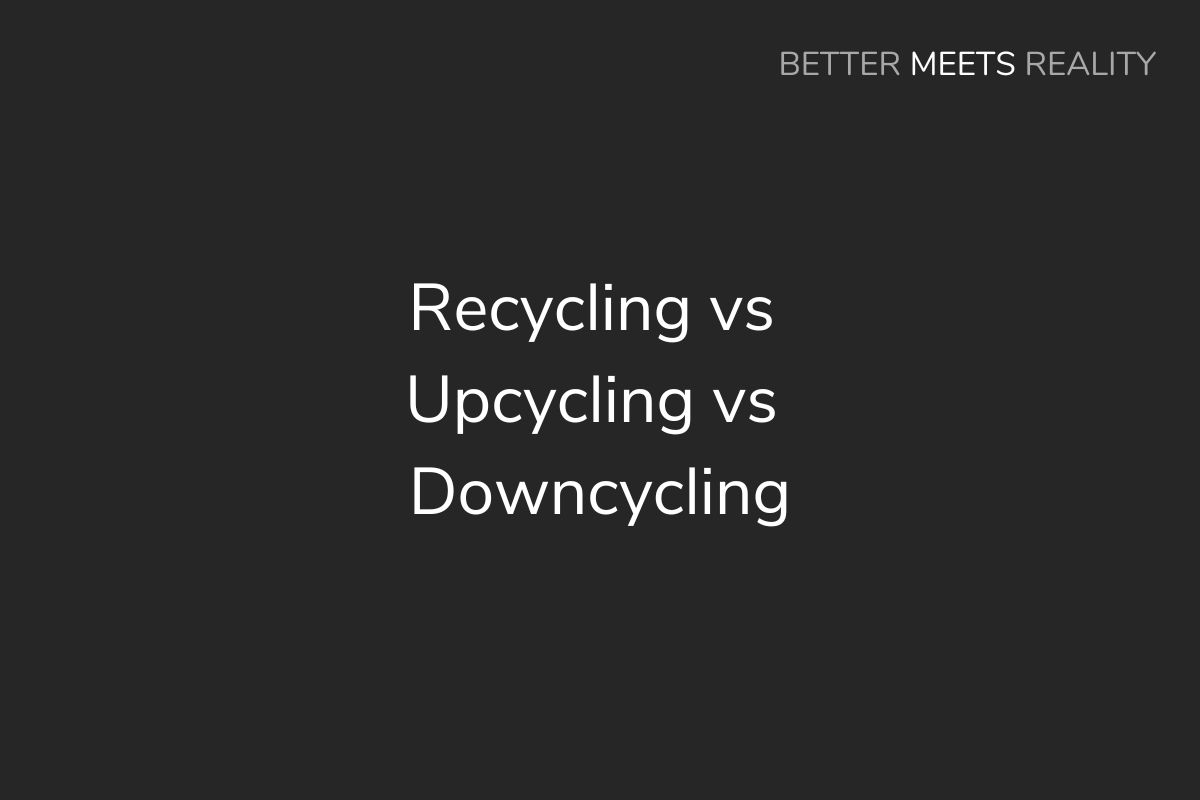In the guide below, we compare recycling vs upcycling vs downcycling.
We outline what each one is, the differences between them, and which might be better for different types of waste and applications.
Recycling vs Upcycling vs Downcycling: Differences
The main differences between these three are:
– Recycling
Involves collecting and processing waste and materials into recycled material (there’s various recycling methods to break down and process waste & materials), that can then be used in new materials and new products
Some common forms of recycling process waste into recycled material that has the same, or similar quality or value as the original material
Having said that, several reports, such as the listed wikipedia.org guide, note that recycling can sometimes become a form of downcycling, as some materials degrade in quality the more they are recycled (some plastics are an example of this, whereby polymer bonds weaken in the plastic each time the plastic is recycled)
– Upcycling
Upcycling involves collecting and converting waste and materials into upcycled material of a higher quality, functionality, or value (compared to the original material)
– Downcycling
Downcycling is the opposite of upcycling.
Downcycling involves collecting and converting waste and materials into downcycled material of lower quality, functionality, or value (compared to the original material)
Some types of open loop recycling may lead to downcycling
– The Involvement Of Upcycling & Downcycling In Reusing & Repurposing Items, Materials & Waste
Upcycling and downcycling might be used in the reuse and repurposing of items, materials and waste in some instances
Recycling vs Upcycling vs Downcycling: Which Is Better?
The method of waste management that is better depends on a few key factors such as:
– The waste material being managed
– What the end use for the processed or converted waste will be
Some of the considerations that might be taken into account might include:
– Some waste materials aren’t suitable for recycling, upcycling or downcycling
Whether it’s because of the physical traits of the waste, or another reason such as it not being profitable to recycle, upcycle or downcycle the waste
– Recycling might be best for …
Recyclable waste and materials that should be broken down and processed, and converted into recycled material
It might also be best for waste and materials that can be used for a similar end use to the original use of the material
One good example of this might be PET plastic bottles that are recycled back into PET plastic bottles
– Upcycling might be valuable or useful where …
Materials can be recovered or salvaged, and have the capability to be used or modified in a new application
One example of this might be salvaging wood or timber that was going to be discarded, such as from public infrastructure projects, or from demolished buildings.
This wood can be sanded down, finished with different seals or paints, and used in products like doors, furniture, and household items like chopping boards.
– Downcycling might be best where …
Waste isn’t suitable to recycle or upcycle, but has still has the capability to be put to other downcycled uses
For example, some plastics may not have the structural integrity to be used in recycled or upcycled applications
However, these plastics might be processed in some way, and used in an application where their lesser qualities and traits can still be utilized
One example of this is downcycling plastic bottles into carpeting or plastic fibres for other uses
Other Guides On Recycling, Upcycling & Downcycling
Potential Pros & Cons Of Recycling
Potential Pros & Cons Of Upcycling & Downcycling
Sources
1. Various ‘Better Meets Reality’ guides
2. https://en.wikipedia.org/wiki/Downcycling
','' ); } ?>